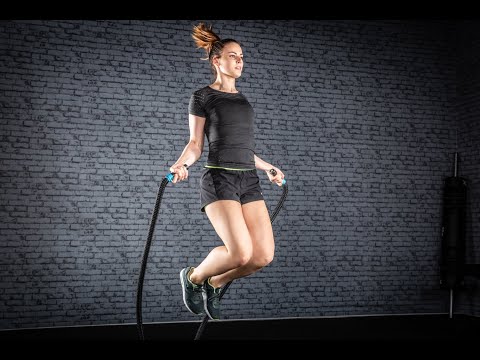
What is Anaerobic Endurance?
Anaerobic endurance is the ability to sustain intense physical activity for a short period of time without becoming fatigued. It is a type of exercise that utilizes the energy produced in the absence of oxygen, also known as anaerobic energy. During anaerobic exercise, energy is generated through the breakdown of glucose, or glycogen, stored in the muscles and liver. Anaerobic endurance activities include activities like sprinting, jumping, weight lifting, and interval training.
Anaerobic endurance is different from aerobic endurance, which is the ability to sustain lower intensity physical activity over a longer period of time. Aerobic exercises require oxygen in order to generate energy and are activities like running, cycling, swimming, and walking.
Anaerobic endurance is important for sports and activities that require short bursts of energy and speed. It helps athletes to increase their speed and power and also assists with muscular development and strength. Improved anaerobic endurance can help athletes to improve performance and reduce fatigue during short, intense activities.
The Benefits of Improved Anaerobic Endurance
Anaerobic endurance is an important component of physical fitness and can bring numerous benefits to your overall health. Improved anaerobic endurance means having a higher capacity for physical activity that requires short bursts of energy, such as sprinting or performing high-intensity interval training (HIIT). When you have improved anaerobic endurance, you are better able to perform at peak levels for a longer period of time.
Some of the most notable benefits of improved anaerobic endurance include:
1. Improved Strength and Muscle Mass: High-intensity interval training is incredibly effective for building strength and muscle mass, and having greater anaerobic endurance will help you to push yourself further when doing HIIT workouts. This type of training helps to build lean muscle which increases your metabolism and burns more calories throughout the day.
2. Increased Cardiovascular Endurance: Anaerobic exercises require more oxygen to be taken in during the activity, which helps to build your cardiovascular endurance. This increased endurance will help you perform better during aerobic activities such as running and cycling, as well as during sports.
3. Reduced Stress Levels: The intense bursts of activity during HIIT can help to reduce stress levels by releasing endorphins which elevate your mood. Improved anaerobic endurance also means that you are better able to manage stressful situations as your body is able to endure more physical strain before it reaches its breaking point.
4. Better Mental Clarity: High-intensity interval training has been shown to increase levels of serotonin, dopamine and norepinephrine, which have all been linked to improved mental clarity and focus. Additionally, physical activity can help to clear away negative thoughts and give you a more positive outlook on life.
These are just some of the many benefits of improved anaerobic endurance. As you can see, making improvements in this area can have far-reaching effects on both your physical and mental wellbeing.
The Best Way to Improve Anaerobic Endurance
Anaerobic endurance is the ability to perform at high intensity for an extended period of time without fatiguing. Improving your anaerobic endurance can help you become a better athlete, increase your stamina, and provide more energy for high-intensity activities. Here are some tips to improve your anaerobic endurance:
1. Incorporate Interval Training: Interval training is one of the best ways to improve your anaerobic endurance. It involves short bursts of high-intensity exercises that are followed by periods of rest. The idea is to push yourself during the exercise and then take a break to recover before starting again. This type of training helps build muscle and increases your aerobic capacity over time.
2. Shorten Your Rest Periods: When you’re doing interval training, it’s important to keep the rest periods short. This will help you maximize the intensity of your workout and give you more benefit from each exercise. By shortening your rest periods, you’ll be able to work harder and build up your anaerobic endurance faster.
3. Focus on High-Intensity Exercises: High-intensity exercises are great for improving your anaerobic endurance because they require a lot of effort in a short amount of time. Examples of these exercises include sprints, plyometrics, and hill sprints. Doing these exercises regularly will help you increase your anaerobic endurance and make you a better athlete.
4. Increase Intensity Over Time: When you first start training for anaerobic endurance, start with shorter and less intense workouts. As you become more comfortable with the exercises, you can gradually increase the intensity. This will help you build up your anaerobic endurance over time.
By following these tips, you can improve your anaerobic endurance and become a better athlete. Interval training, shortening your rest periods, focusing on high-intensity exercises, and increasing the intensity over time are all effective ways to improve your anaerobic endurance.
Anaerobic Interval Training
Anaerobic interval training is a great way to improve anaerobic endurance. It involves performing high intensity exercise intervals, followed by rest intervals, which allows for full recovery between each interval. This type of training is effective for improving speed and power, as well as increasing muscular strength and endurance.
The intensity of the intervals should be between 85-95% of your maximum heart rate. The duration of the intervals should be anywhere from 10 seconds to 3 minutes, with the rest interval lasting anywhere from 1-5 minutes depending on the goal you are trying to achieve. To maximize the effectiveness of this type of training it is best to perform it at least twice per week.
Some examples of anaerobic interval training exercises include sprinting, jumping rope, mountain climbers, burpees, and plyometrics. Before you begin, it’s important to warm up with 5-10 minutes of light aerobic activity to get your heart rate up and prepare your body for the more intense exercises. Additionally, make sure to cool down afterward with some light stretching to help prevent any muscle soreness.
